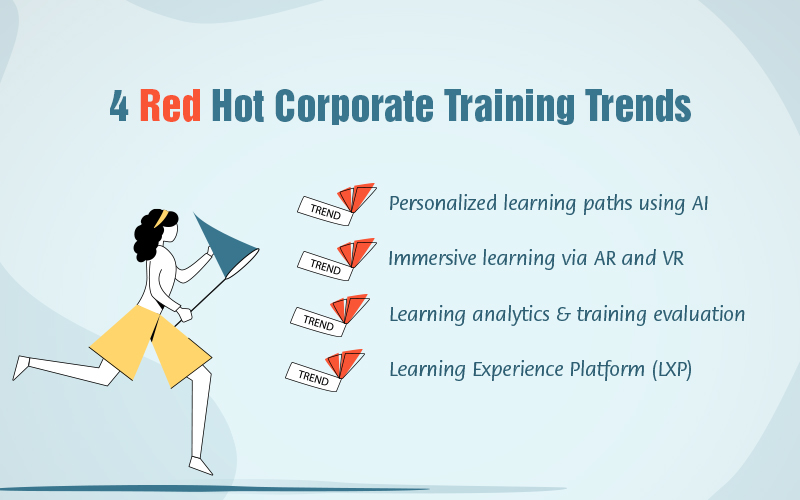4 Fabulous Ways to Leverage Virtual Reality for Online Training

At times, employees might feel online training to be impersonal and unstimulating. It has its limitations such as a lack of tactile interaction and the inability to engage learners. However, you can change this situation by applying virtual reality to your online training.
Take your corporate training to the next level by offering a 360 degree view of the learning environment using Virtual Reality in your online courses. Virtual Reality (VR) is a computer-generated simulation of a three-dimensional environment that learners can interact, using special electronic equipment, such as a helmet and gloves fitted with sensors.
According to Goldman Sachs’ Virtual & Augmented Reality Report, Virtual Reality in education is predicted to be a $200 million industry by 2020 and a $700 million industry by 2025.
Let’s now look at the benefits of Virtual Reality in online training.
- Facilitates learning in a risk-free environment
- Allows learners to make mistakes and learn without serious consequences
- Offers an opportunity to test out new assumptions and techniques to boost productivity & come up with innovative ideas
- Trains employees simultaneously and consistently, across various geographic locations
Let’s now explore 4 ways to use virtual reality in online training.
1. Design Robust Courses
Training through Virtual Reality is very effective as employees actually experience the training and it will have a lasting impression on their minds. You can add value to online onboarding programs and new hire training with virtual reality. New hires get to exlpore their organization – campuses and facilities across countries.
VR also plays a vital role in presentations for product launches, HR training, and activities for employee training. Showing the features and benefits of a newly launched product to the sales teams using VR will help them grasp the details effectively and sell efficiently.
Transport your sales and service staff to your remote manufacturing or research facilities using VR technology to train them on heavy, complex machinery or research equipment. This saves transportation and accommodation costs, and many productive work hours.
2. Offer Risk-free Simulations
You can design an online safety/compliance training simulation that instructs employees on how to handle hazardous chemicals or operate complex heavy machinery in a virtually environment. This facilitates a safe learning in hazardous workplaces and avoids severe consequences and costly mistakes.
3. Take Video-based Learning to Next Level
Video-based Learning (VBL) is an effective knowledge transfer approach; scale new heights by combining it with virtual reality. This facilitates a first-hand learning experience by placing learners in an environment, virtually. Training videos based on VR simulations are very effective in software training, workplace health and safety training, onboarding, etc.
4. Have Lively Online Collaboration Activities
Enliven your online collaboration activities with VR technology, by offering learners a chance to meet, discuss, and share. For example, a HR Manager can conduct virtual interviews or take new hires on a tour of their office and the various departments.
Here’s a quick look at companies who’ve implemented VR in their training and are reaping multiple benefits:
- NASA is using virtual, augmented and mixed reality technologies to train astronauts and to share a walk on Mars.
- Walmart has been using VR technology in 31 of its training academies over the past few months, and on account of its success will be rolling out the program to all 200 academies, by the end of 2017.
In March of 2016, a medical college in London, the Imperial College, performed the first retransmission of a virtual reality surgery. The surgeon had a camera and students all over followed the surgery.
Try these four ways to integrate Virtual Reality in your corporate training for better engagement and an immersive learning experience.





